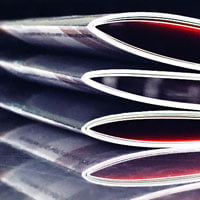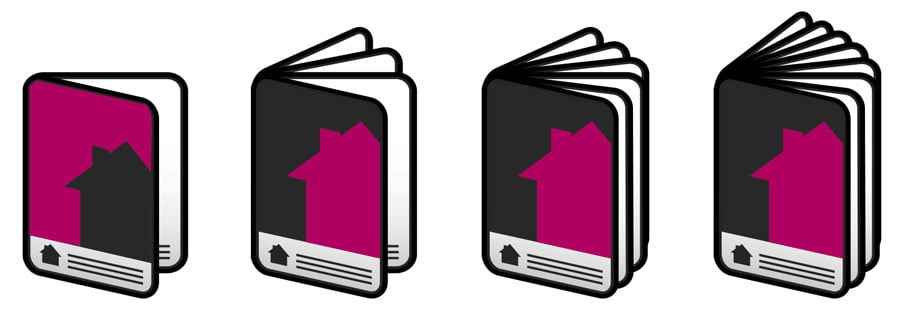When we say PP it doesn’t mean ‘Political Party’, it doesn’t mean we’re signing on someone’s behalf and it’s definitely not a written abbreviation for pianissimo. PP in Printers Vocabulary means we are talking ‘PRINTED PAGES’ or ‘PAGE PAGINATION’.
As you might expect the number of pages printed has an impact across several elements of print. For example, when producing a saddle-stitched booklet (stapled on the spine) the number of pages will always need to be divisible by four.
This is because, when you fold an A4 sheet it half it becomes A5 with 4 sides. This is referred to as A5, 4pp. An A3 sheet folded in half becomes an A4, 4pp – if you add inner sheets (an additional four pages each time) the unit becomes 8pp, 12pp, 16pp and so on.
Moving on from this, if you add a heaver material for your cover this can affect the breakdown of your booklet brief and may be displayed as a ‘cover: 4pp, inner 12pp’.

When you fold a sheet the PP increases…
Adding additional folds to your sheet will also increase the PP. Therefore a leaflet with two folds is a 6pp as now there are six pages; with three folds becomes an 8pp and four folds a 10pp. At this point the original and finished size help to understand the scope of the job.
We will ask for artwork to be supplied in the order in which it is to be read – so page 1 is your front cover, page 2 your inside cover, page 3 is the page to the right, page 4 overleaf, etc. Your back pages should be at the end of your document. Our clever software and machinery take the hard work out of ensuring the pages are imposed correctly!

If you need chapters to start on a right-hand-page it should always be an odd number. Adding a blank page allows this position to be correct.
Creating a brochure yourself?
We hope this has been helpful – if you have any questions please get in-touch with the team hello@quickprint.co.uk
